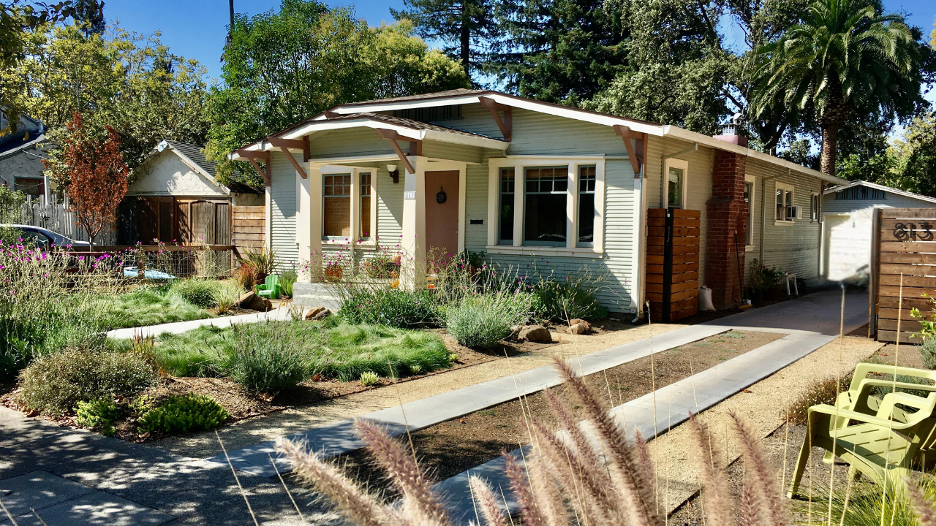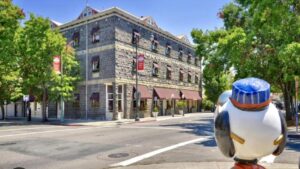If you’re a fan of history, old buildings, and neighborhoods with stories to tell, Santa Rosa’s historic districts are like a treasure trove waiting to be discovered.
Santa Rosa is a city that wears its history with pride, and nowhere is that more evident than in its eight designated preservation districts. These areas protect the architectural and cultural heritage of the city, ensuring that historic homes and landmarks remain intact for future generations. These eight districts are more than just collections of historic buildings; they’re vibrant, living museums that capture the heart and soul of Santa Rosa’s past. Whether you’re a seasoned architecture buff or simply love getting lost in a place where time seems to stand still, exploring these neighborhoods offers a unique journey through Santa Rosa’s rich heritage. Let’s take a closer look at what makes each one so special.
But first, what exactly is a preservation district?
What is a Preservation District?
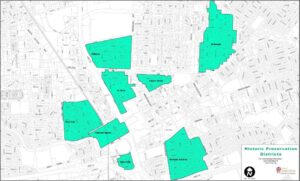
Recognizing the value of Santa Rosa’s historic resources, the City Council, in collaboration with the City’s Cultural Heritage Board, established designated areas known as preservation districts. These districts were created to maintain the city’s architectural integrity, preserving the unique character and craftsmanship of historic homes and commercial buildings. This not only safeguards the city’s heritage but also enhances the charm and value of the neighborhoods. Now, let’s explore Santa Rosa’s eight preservation districts, each offering a distinct story and character.
1. Cherry Street Historic District
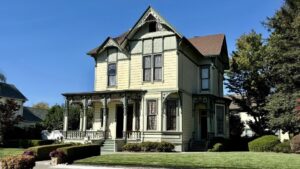
If you’re drawn to Victorian-era homes, Cherry Street is a must-see. This district is one of the best-preserved in Santa Rosa, with grand Queen Anne, Colonial Revival, and Craftsman homes that transport you back to the late 1800s. Strolling down the tree-lined streets, you’ll notice intricate detailing on the homes—turrets, wrap-around porches, and ornate woodwork are common features here. Cherry Street is a favorite for architecture buffs and anyone looking to capture a snapshot of 19th-century elegance.
Highlights: Victorian architecture, tree-lined streets, walking tours
2. McDonald Historic District
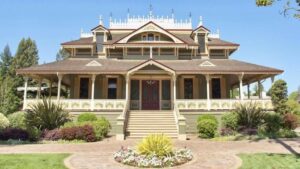
Perhaps the most famous of Santa Rosa’s preservation districts, the McDonald Historic District is home to the iconic McDonald Mansion (also known as Mableton), a Victorian estate that was built in 1876 as a summer home for the McDonald family, whose primary residence was in San Francisco. The district’s wide streets are lined with sprawling homes, including Neoclassical and Tudor styles, each with lush gardens and mature trees. Walking through the McDonald Historic District feels like stepping into an upscale residential museum with grandeur around every corner.
Highlights: McDonald Mansion, grand estates, lush gardens
3. Ridgway Historic District

Located just north of downtown, Ridgway is known for its early 20th-century homes, many of which display charming Craftsmanand Tudor Revival styles. What makes Ridgway special is its diverse mix of architectural influences, reflecting the growth of Santa Rosa during the 1920s and 1930s. Its proximity to the city center adds a layer of vibrancy, with many homes boasting restored period details that celebrate their original charm.
Highlights: Craftsman homes, proximity to downtown, vibrant neighborhood feel
4. Olive Park Historic District
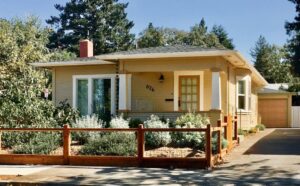
Olive Park is a smaller residential district characterized by its modest bungalows and Craftsman-style homes. Built mostly in the 1920s, this area reflects the middle-class aspirations of its original inhabitants. The peaceful streets of Olive Park are a testament to Santa Rosa’s early suburban development, with wide sidewalks and family-friendly parks nearby.
Highlights: Cozy bungalows, Craftsman homes, suburban charm
5. St. Rose Historic District
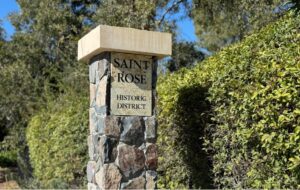
Named after the St. Rose Catholic Church, this district is one of the most architecturally diverse in Santa Rosa. Here, you’ll find an eclectic mix of styles, from late 19th-century Victorian homes to 1920s Spanish Revival and Craftsman residences. The area has a distinctive charm, with homes reflecting the varied tastes of the city’s early settlers. The St. Rose Historic District is also conveniently located near the heart of downtown, making it a popular spot for those who appreciate a mix of history and urban convenience.
Highlights: Architectural diversity, proximity to downtown, St. Rose Church
6. Burbank Gardens Historic District
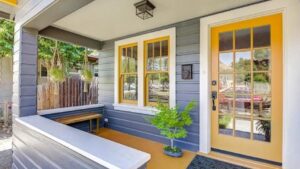
Named after the famed horticulturist Luther Burbank, this district is a quiet oasis just south of downtown. It’s home to early 20th-century homes, many of which were built for the working class. The district exudes a simple, unpretentious charm with its classic bungalows and cottage-style homes. Today, Burbank Gardens is a mix of private residences and rental properties, offering a laid-back atmosphere perfect for those seeking a quieter slice of Santa Rosa’s history.
Highlights: Bungalows and cottages, close to Luther Burbank Home & Gardens
7. West End Historic District
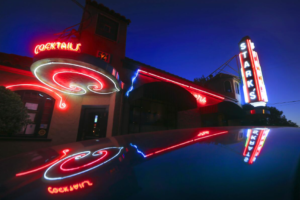
The West End Historic District has seen a resurgence in recent years, thanks in part to its proximity to the thriving Railroad Square. Once considered a working-class neighborhood, the district is now a hub of activity with restored homes, trendy shops, and restaurants nearby. The district’s Craftsman-style homes and early 20th-century cottages retain their historic charm, while the neighborhood’s revitalization adds an exciting new energy.
Highlights: Railroad Square, revitalized neighborhood, trendy shops and dining
8. Railroad Square Historic District
Railroad Square is where Santa Rosa’s past and present intersect most dramatically. Once the commercial heart of the city in the early 1900s, this district is now a bustling area filled with restaurants, boutiques, and wine bars, all housed in restored historic buildings. The district’s brick warehouses and train depot hark back to a time when the railroad was the lifeblood of Santa Rosa’s economy. Today, it’s a vibrant area for dining and shopping, attracting both locals and visitors.
Highlights: Historic train depot, brick warehouses, lively dining and shopping scene
Why Preservation Districts Matter
Preserving these districts is not just about saving beautiful buildings. It’s about honoring the stories, craftsmanship, and architectural styles that shaped Santa Rosa’s unique identity. Whether you’re an architecture enthusiast, a history buff, or just looking for a scenic stroll, these districts offer a rich tapestry of the city’s past, beautifully woven into its present.
Exploring Santa Rosa’s historic districts is like stepping into a living museum. Each home, street, and landmark has a story to tell, creating a sense of place that few modern neighborhoods can replicate. If you haven’t yet explored these areas, now’s the perfect time to take a walk through history. You might just find yourself falling in love with the city all over again.
Ready to Get Started?
If you’re ready to embark on the journey of buying a second home in Sonoma County, contact Tim DeBellis for the guidance you can count on. From luxury homes in Healdsburg, CA, to gorgeous Santa Rosa properties, Tim knows all the top tips for buying your second home as seamlessly as possible. Get started today!

